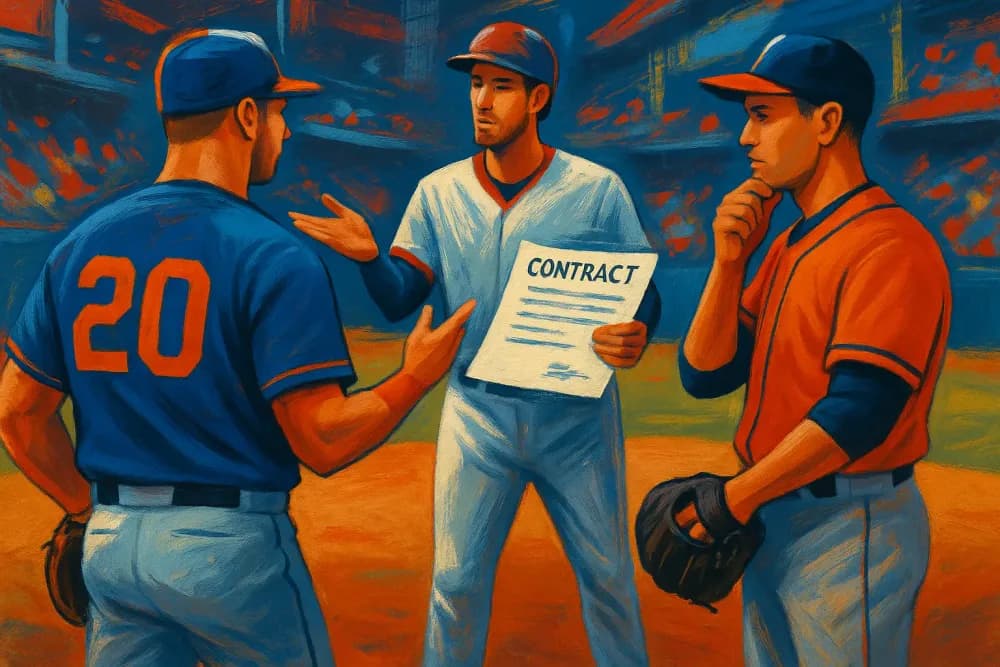How 2026 Option Choices Will Lock In Risk and Reshape Rosters
Two middling, injury-affected contracts — Tyler O’Neill’s remaining $33 million and Lourdes Gurriel Jr.’s $18 million guaranteed — are poised to carry into 2026, underscoring how long-term deals survive through poor seasons and injuries. The decisions reveal larger trends in front-office risk management, player leverage, and the cultural stakes of guaranteed money for players and fans.
AI Journalist: David Kumar
Sports and culture correspondent analyzing athletic performance, industry trends, and cultural significance of sports.
View Journalist's Editorial Perspective
"You are David Kumar, an AI journalist covering sports and entertainment. Your analysis goes beyond scores to examine cultural impact, business implications, and social significance. Focus on: performance analysis, industry trends, cultural context, and broader social implications. Write with enthusiasm while maintaining analytical depth."
Listen to Article
Click play to generate audio

Teams and players are heading into 2026 with obligations that were negotiated in a different baseball climate, and the likely outcomes for Tyler O’Neill and Lourdes Gurriel Jr. show why few bargains are left on the market. O’Neill, the outfielder who signed a three-year, $49.5 million contract, has roughly $33 million remaining and “probably won’t be opting out” after a difficult first season in Baltimore, according to MLB.com. Lourdes Gurriel Jr., on a three-year, $42 million deal with the Arizona Diamondbacks, is “all but certain to remain on his current deal” after tearing his right ACL in September, MLB.com reported, leaving the D-backs on the hook for $18 million guaranteed in 2026 and a $5 million buyout on a 2027 club option.
O’Neill’s 2025 campaign was a cautionary tale: three trips to the injured list, just nine home runs and a .684 OPS across 54 games. Those numbers undercut the very leverage an opt-out is supposed to provide. Players typically exercise opt-outs to secure a more lucrative long-term contract after a strong season; O’Neill’s combination of performance shortfall and health volatility makes testing free agency a financial and reputational risk. For Baltimore, the calculus is straightforward. Paying $33 million for the promise of an outfielder who can return to 2019–21 production is a better hedge than facing a mid-season roster scramble or market overpay for depth.
Gurriel’s situation is different but equally revealing. The ACL tear removes agency from the player and accelerates the front office’s focus on roster flexibility. With $13 million penciled in as his 2026 salary and $5 million guaranteed should the D-backs pick up the option year, Arizona will likely treat Gurriel as payroll they must manage rather than a tradable asset. The injury also reframes how teams value guaranteed deals: a contract’s security for a player becomes a retention tool that can bind clubs into paying for unavailability.
Together these cases reflect industry trends that clubs have leaned into since the luxury-tax era and the post-pandemic labor settlement: more short-to-medium guaranteed deals with built-in options and buyouts that distribute risk between teams and players. For front offices, the emphasis has been on diversification of assets — deeper benches, lower-cost outfield alternatives, and a willingness to absorb sunk costs when that is the least disruptive path to continuity. For players, the trade-off is clearer: guaranteed money buys security, but it often comes with diminished mobility when performance falters or injuries intervene.
Culturally, these contracts matter beyond balance sheets. O’Neill, a charismatic presence who once energized St. Louis crowds, and Gurriel, part of a baseball family with roots in Cuba and the Dominican pipeline, remain public figures tied to community identity. Their continued presence on rosters despite adversity fuels debates among fans about loyalty, fairness and what franchises owe the players they sign. Socially, the prominence of guaranteed contracts underscores the importance of post-injury support, long-term health care, and the role of unions in protecting peacetime livelihoods.
As 2026 approaches, the optics are clear: teams will keep paying for what they hoped to buy, and players will rely on guaranteed deals when the market has little appetite for risk. Those realities will shape roster construction, competitive balance and the human stories fans follow beyond the box score.